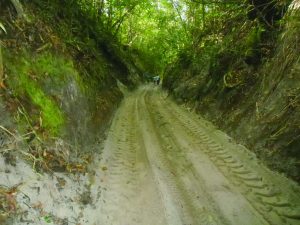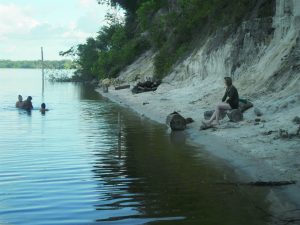Home News Orealla leading the way in eco-tourism
The Amerindian settlement, Orealla, situated 50 miles up the Corentyne River, Berbice, Region Six (East Berbice-Corentyne), is no doubt leading the way in eco-tourism. The village is home to two tribes of Guyana’s indigenous people; the Arawaks and Warraus.


With about 2000 residents, Orealla is one of the cleanest places in Guyana and maybe the only community which has a weekly clean-up campaign where residents must take part as a form of employment for the family.
The breathtaking sunrise over the stillness of the Corentyne River produces a desire to go through the day trying to get as close as possible to nature.
A day in Orealla, wrapped in the arms of nature, not only allows you to listen to the chirping of the birds and whistling trees, but also the hospitality of its people.
The Arawak are the ones who first arrived at the settlement from neighbouring Suriname in 1918. They had escaped the deadly flu virus which had threatened to wipe out most of the natives of a village called Epora, situated on the Suriname side of the Corentyne River, during World War l. Today, Epora continues to strive as a community but not with many inhabitants.
But in Orealla where a few families migrated, they survived by farming and fishing. The men built houses from trees in the community and established small farms around them which the women attended to as the males went out hunting.
One of those persons who grew up in the village knowing that his parents survived the deadly flu attack on Epora 97 years ago is Fredrick Hendricks.
Now the oldest resident of Orealla, he remembers those days. “Back then my father and uncles will go and hunt and sometimes take months before they return.” He said the men would return to the village with preserved slaughtered meat.
Their return to the village was a time to rejoice. “Some of the meat my father would pack in a boat and all the cassava and pineapple from the farm… me and my two sisters and brothers would go with him to Corriverton” (a town 50 miles up the Corentyne River).
According to Hendricks, it would take them, including his mother, about one week to get to Corriverton in the family’s canoe. The produce would be sold and the family would take a vacation and return to the village when all earned monies were exhausted. The vacation lasted for between one to two weeks.
Back home, almost a month after they left, the cycle would start again. Meanwhile, one of Hendricks’ granddaughters, Ingrid D’Veir, said to this day, the people of Orealla continue to be big spenders whenever they have money. “They don’t save; they will go on a spending spree until all their money is finished.”
Unfortunately, the natives of Orealla have not preserved their agglutinative language which is referred to as the Arawakan languages. Today, they speak English, and much better than those living in the urban areas in Guyana.
These days, most of the men earn their money by working in the logging industry. They are, however, only allowed to get employment if they participate in the weekly village clean up exercise.
The village also has a food processing factory, where about five women have gained employment in processing and packaging some of the fruits produced in the village. From the factory comes jams, jellies, guava cheese, and many by-products of cassava. In supermarkets in urban communities, especially Corriverton and New Amsterdam, those products are fast sellers.
Orealla “The Land of Chalk” has everything a tourist would enjoy – nature walks, sightseeing and friendly people. On a visit, you may be able to behold a jaguar in its natural habitat while enjoying the sweet succulent juice flowing from a fresh mango picked by a Squirrel Monkey hovering above on a limb.
The peace and tranquillity experienced on any nature walk will be interrupted temporarily by the cry of a bird escaping from its predator.
One is left in awe as they marvel at the array of birds, magnificently coloured, decorating the sky.


